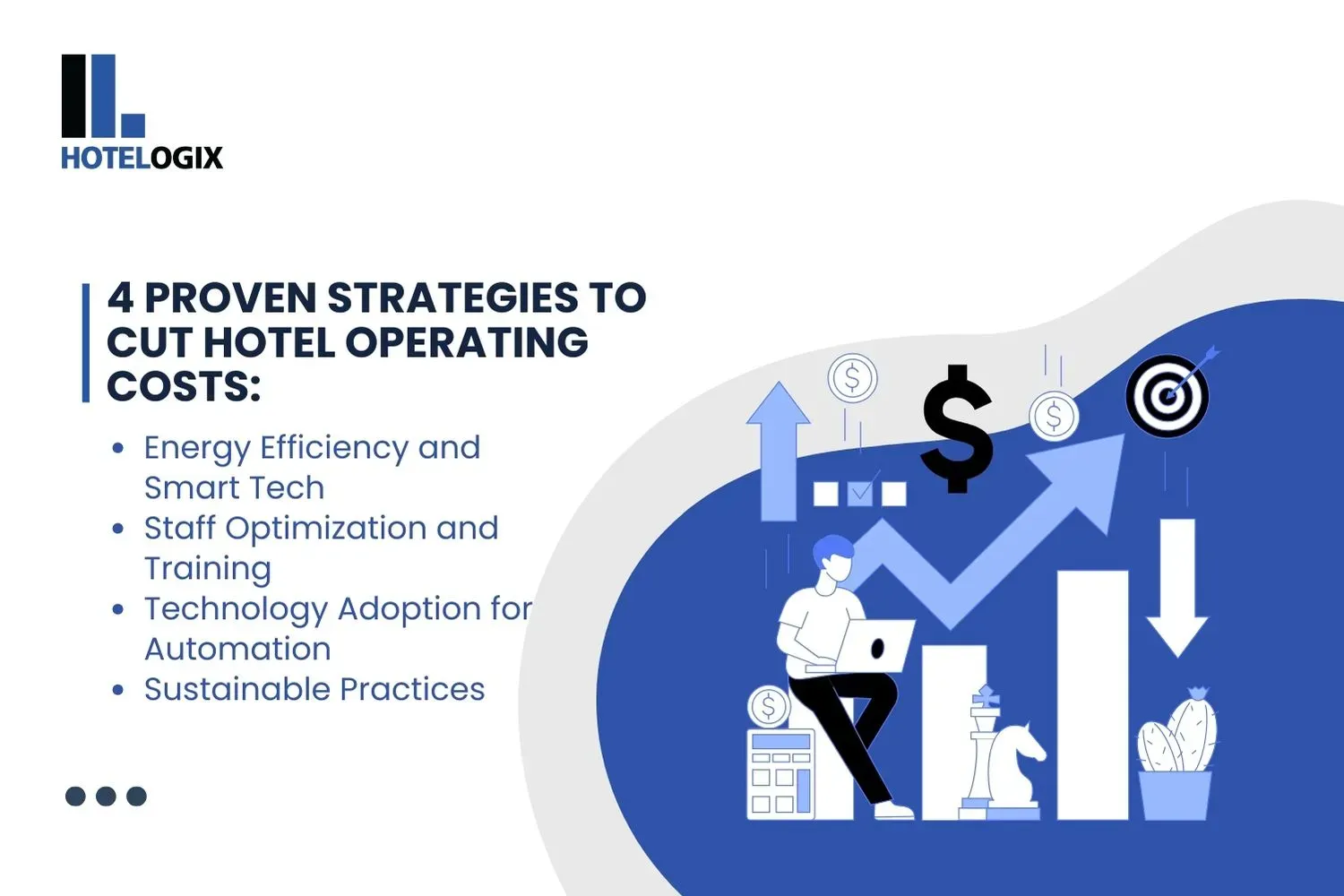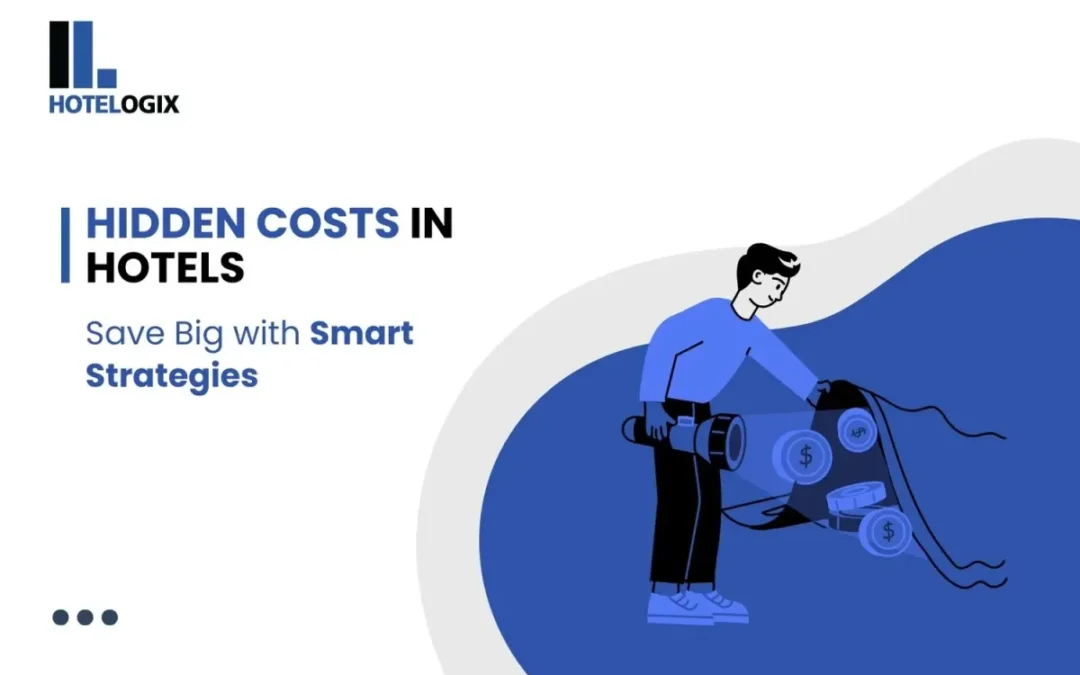But being a hotelier, have you ever questioned yourself, why is my hotel ever booked but profits not up to the mark? It is a maddening reality for many hoteliers. On the face of it all is well, guests are checking in, rooms are filling and forward bookings are healthy. But unseen inefficiencies such as idle staff, excessive energy consumption and legacy processes are slowly eating away at your bottom line.
Controlling operating costs is one of the biggest challenges in hospitality. It’s a fine line: how do you reduce expenses without compromising guest satisfaction?
This blog will help you uncover the hidden drains on your margins and give you actionable solutions to reclaim lost profits while keeping your guests happy.
Understanding Hotel Operating Costs
Running a hotel isn’t just about offering great service—it’s also about keeping a tight grip on operating expenses. Let’s start by breaking these costs into three main categories:
Fixed Costs
These are the predictable expenses that won’t budge, no matter how full or empty your hotel is. Think property taxes, annual licenses, and equipment leases. For example, your insurance premiums remain the same whether your rooms are full or you’re experiencing a low season.
Variable Costs
Variable costs are directly tied to how busy your hotel is. They rise when occupancy is high and shrink during quieter times. These include things like guest amenities, cleaning supplies, and food and beverage inventory. Picture this: every additional guest means more towels to launder, more toiletries to replenish, and more breakfast platters to serve.
Semi-Variable Costs
This tricky category includes expenses that are part-fixed and part-variable. A prime example is staffing. While your core team’s salaries remain steady, you might have to bring in extra hands during peak seasons, increasing overtime payouts or temporary hiring costs.
Did You Know? Deloitte reports that hotels that carefully track and categorize their costs reduce operational expenses by up to 15%.
Top Factors Driving Costs
There are several things that drive your operating expenses and understanding those can help you get to the root of inefficiencies:
Occupancy Rates
High occupancy is a nice problem to have, but it creates additional operational demands. More guests equal increased energy bills, cleaning supplies, and a bigger workload for your team. Here’s the rub, though: varying occupancy can translate to being overstaffed when business is slow, or underprepared when it’s busy.
Energy and Utilities
Utility expenses may be a stealthy assassin of profitability. From HVAC systems to lighting to hot water usage, hotels are energy guzzlers.. Without a clear plan, these bills can spiral out of control, particularly during extreme weather seasons when heating or cooling demand peaks.
Staffing and Labor
Staffing can represent as much as 50% of your operating costs. Without optimized scheduling, you’re left to paying for overtime or having idle employees during off-peak periods. During non-busy hours, especially when the front desk is overstaffed, it is a time and money drain.
Food and Beverage Supplies
The centralized hotel management system of Hotelogix integrates your front desk with housekeeping as well as the other departments to facilitate better communication and resource allocation. It’s a game-changer for avoiding unnecessary costs.
4 Proven Strategies to Cut Hotel Operating Costs

Managing costs in the hospitality industry isn’t just about saving a few dollars—it’s about creating efficiencies that benefit both your bottom line and your guests. Let’s dive into four practical and impactful strategies:
Energy Efficiency and Smart Tech
Of all the operating costs of a hotel, energy bills are one of the largest, but they’re also one of the greatest opportunities for savings.
- Switch to LED Lighting: Switching out traditional bulbs for LED lighting can decrease electricity use by 75% or more. LEDs have a longer lifespan, require virtually no maintenance and you have a win-win for your budget and sustainability goals.
- Install Smart Thermostats: Imagine a system that adjusts room temperatures automatically when a room is unoccupied. This reduces energy waste without compromising guest comfort.
- Regular Energy Audits: Periodic audits can help identify inefficiencies, such as aging HVAC systems or poorly insulated windows. Small fixes, like sealing gaps, can lead to significant savings over time.
Staff Optimization and Training
Staffing is the single largest expense category in hotels, but good planning will ensure you get the most out of your staff.
Cross-Train Employees: Cross-training provides employees with the tools to act in multiple roles, which is invaluable. Train front desk employees to perform concierge duties, or housekeepers to cover laundry operations during busy hours. This minimizes the need for more hires.
Use Scheduling Tools: With the right software, you can align staff work schedules with average occupancy so that you have just the right number of people on duty (no one too many).
Continual Training: Employees are more productive, make fewer mistakes, and provide better service. Training also leads to better employee retention, which reduces hiring costs.
Technology Adoption for Automation
Automation is no longer optional; it’s essential to compete in the modern hospitality landscape.
- Repetitive Activities Automation: There is more prospective dependency towards PMS so as to manage bookings, and check-ins, as well as schedule housekeeping. Just think of all the hours that can be saved when room allocation and other report writing tasks are automated.
- Timesaving Care: These care systems are booking intelligent, which means they will dynamically increase and decrease room rates permanently. You do not have to worry about undervaluing the room when the demand is at its highest or marking it for higher value during sale seasons.
- Guest Communication: Routine inquiries and confirmation messages during booking can be automated as well along with the pre-arrival instructions to significantly decrease the workload on the reception staff.
Sustainable Practices
Sustainability isn’t just good for the planet—it’s good for your wallet too.
- Water-Saving Fixtures: Install low-flow showerheads and faucets to reduce water usage without impacting the guest experience.
- Eliminate Single-Use Plastics: Switch to refillable dispensers for toiletries, which are cost-effective and eco-friendly.
- Composting and Recycling: Composting kitchen waste and recycling materials like cardboard and glass can significantly reduce disposal costs.
Study Insight: A Cornell study found that hotels using PMS software reduced staffing costs by 20%, while also improving guest satisfaction through more efficient operations.
4 Unique Ways to Reduce Hotel Expenses and Maximize Revenue
Cost-cutting doesn’t always mean reducing services—it can also involve maximizing existing resources. Here are four creative ways to boost revenue while cutting costs:
Leveraging Event Spaces
Your unused conference rooms or banquet halls can be transformed into revenue drivers.
- Host corporate events, weddings, or community gatherings.
- Offer flexible packages to appeal to diverse audiences, from startups needing meeting space to local artists hosting workshops.
- Use technology to manage bookings and optimize availability, ensuring spaces are never idle for long.
Partnering with Local Vendors
Sourcing products locally can reduce costs and add unique value to your guest experience.
- Serve locally roasted coffee or farm-to-table dining options that highlight regional specialties.
- Partner with local artisans for in-room amenities, such as handmade soaps or decorative items, which enhance your brand while supporting the community.
Digital-First Guest Experiences
Self-service systems are handy for saving costs on personnel expenses; however, they also serve to enhance customer satisfaction. Make use of technology to optimize both core business activities and cut costs.
Put in place self service check in kiosks to lessen the amount of customers waiting to be served, thereby increasing the number of customers served in a fixed time.
Design mobile applications that facilitate room booking, remote key entry, and special deals. The streamlining of operational processes alongside these applications is a major boon for such travelers.
Environment-Friendly Certifications
As a business strategy, green certifications are not a bad idea. They are ideal for enticing travelers who are willing to pay more, but prefer to use the services of environmentally considerate hotels.
The requirements and initiatives for obtaining such certifications, like sustainable and energy efficient devices and appliances, are often cost effective in maintaining the business over a long period.
Tracking Operating Costs: Key Metrics
Numbers don’t lie, and tracking the right metrics can give you invaluable insights into your hotel’s financial health. Here’s what to keep an eye on:
- Cost Per Occupied Room (CPOR): This metric reveals how much you’re spending per room that’s occupied. High CPOR could mean you’re overspending on amenities or labor.
- Labor Cost Percentage: Compare your labor costs to your overall revenue. If this percentage is too high, it might be time to reassess scheduling or staffing levels.
- Energy Costs Per Room: Track your energy consumption per occupied room to identify inefficiencies. Analyzing trends can guide decisions like upgrading HVAC systems or introducing energy-saving initiatives.
- Profit Margin Analysis: Regularly assess your total revenue versus expenses to maintain a healthy margin and spot areas that need cost control.
Emerging Trends in Cost Management
1. AI-Driven Energy Management
AI systems can analyze energy usage patterns and automatically optimize settings to reduce wastage. These systems can also predict peak usage times, helping you prepare in advance.
2. Self-Service Solutions for Guests
Today’s travelers value convenience. Self-service kiosks, mobile check-ins, and automated concierge services reduce labor needs while enhancing the guest experience.
3. Sustainability as a Selling Point
Eco-conscious travelers actively seek out green hotels. Highlighting your efforts in reducing plastic, saving energy, or supporting local communities can set you apart and win loyalty.
Common Challenges and Solutions
Cost vs. Guest Satisfaction
Slash costs, not quality. Investments that improve efficiency without sacrificing guest enjoyment (such as energy-savers or the redesign of staff training) are where your attention should lie.
Overcoming Initial Investment Barriers
While tech upgrades or sustainable solutions may seem expensive initially, calculate their ROI. For instance, automating tasks or upgrading HVAC systems often pays off in a few years through reduced expenses.
Managing Costs During Low-Demand Seasons
Off-season doesn’t have to mean low profits. Offer discounted packages, host events, and close underused areas to maintain profitability during slow periods.
Conclusion
Managing hotel operating costs isn’t just about cutting expenses—it’s about making smarter, more strategic decisions that enhance both your profitability and guest experience. From understanding where your money goes to implementing energy-saving technology, optimizing staffing, and leveraging automation, every step you take toward efficiency has the potential to transform your business.
But remember, it’s not only about reducing costs; it’s about reinvesting those savings into what truly matters: providing memorable stays for your guests, supporting your staff, and staying ahead of industry trends.

